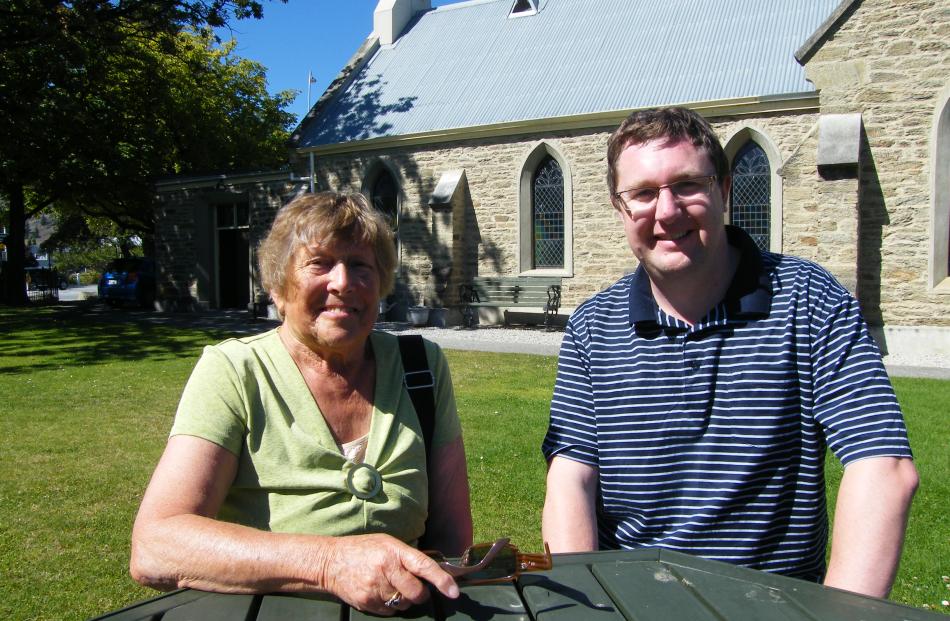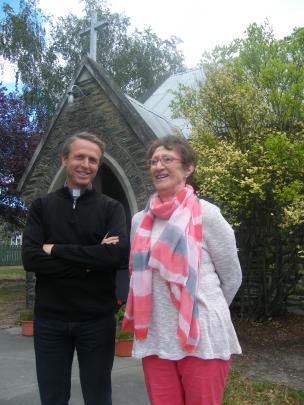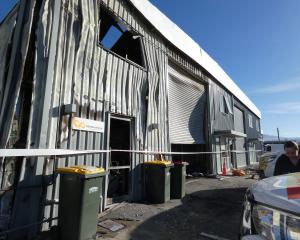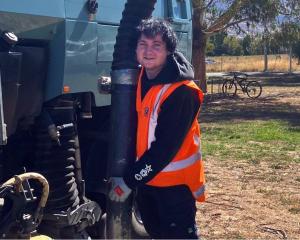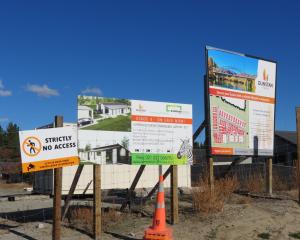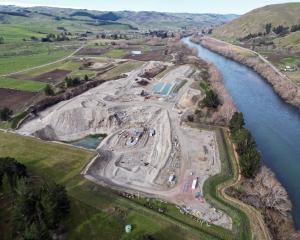Earthquake strengthening work being done on some Central Otago churches poses broader questions about the future of the historic buildings, church leaders say. Pam Jones looks at the preservation projects and what they mean for church communities.
Technology can be a great thing, and advances in earthquake strengthening work have been good news for St Andrew’s Anglican Church in Cromwell.
With estimates for the work required dropping by up to $250,000 between two engineering reports six years apart, it meant the church went from "why would you spend that much to why wouldn’t you", Upper Clutha Anglican Parish vicar the Rev Damon Plimmer said. The church, which was built in 1874 and is part of the Upper Clutha parish, is only at 15%-20% of the building code, and the government threshold is 34% of the building code.
A 2011 engineering report from Batchelar McDougall Consulting in Wanaka said it would cost between $200,000 and $300,000 to strengthen St Andrew’s by installing external buttresses.
But a report last year by the same firm found new technology could now be used to strengthen the building by securing its roof to its walls — bringing it up to 34% of the building code — at a cost of just $50,000.
St Andrew’s was fortunate to have cash reserves and was using some of those together with a grant from the Central Lakes Trust and donations from parishioners to do the work, which would be done later this year, Mr Plimmer said.
It was a "great result" which would preserve the building for future generations, he said.
"We recognise that we are the stewards of this building and we would like to think that generations to come will be able to appreciate it."
But as well as physically reinforcing the building, the project also reminded of the role of St Andrew’s in the Cromwell community and posed broader questions about the future of the Christian Church, Mr Plimmer said.
As congregations in many areas age and dwindle, what is the way forward?
Already, some churches are opening their doors to other faiths and for community events such as concerts, exhibitions, weekly music sessions for pre-schoolers and meditation for all.
Ecumenical services were becoming more common, with greater collaboration between different denominations a reminder of the common Christian ideals, Mr Plimmer said.
"There is a growing ecumenical spirit and that is happening more and more naturally. What we have in common is much greater than our differences ... We [St Andrew’s] want to be a source of good news and hope in the community, working together with other groups who have a common wish. That traverses denomination or religious affiliation."
Mr Plimmer predicted the ecumenical spirit would remain and prosper, and more work would be done outside of church walls too, with pastoral, chaplaincy and community work remaining important.
But the affection for the physical church buildings remained, St Andrew’s People’s Warden Noeline Watson said.
"It reminds us where we’ve come from, and also points us to the future."
Engineering advances are also helping the Alexandra-Clyde-Lauder Union Parish, which combines the Presbyterian and Methodist faiths.
Earthquake strengthening work is planned for its 1876 Alexandra church later this year.
The church is about 34%-35% of the building code, but will spend $12,000 to $20,000 on work that will take the building up to 67% of the building code, by tying the gable ends with steel rods. Church reserves will be used, and grants applied for.
"We’re stoked," the Rev Andrew Howley said.
"Churches are landmark buildings, and landmarks in our life stories, they are places of celebration and grieving, of rejoicing, tears and trauma. Whether or not people come to church every week, they like to know the physical building is there. There’s a sense that if the church is still standing, everything in the world is OK. People like to have the option of going to church. The building is an anchor."
The Presbyterian Clyde St Mungo’s church is mainly a wooden structure, but a concrete block side section which is used for storage does not meet earthquake requirements and will be demolished.
But evaluation of the role of the church in the Clyde community was under way, as numbers attending services were low, Mr Howley said. The Clyde community wanted to keep having weekly church services, but it was possible they could be held in different venues in future years.
He acknowledged the number of people affiliated with the Christian religion was declining.
In the 2013 Census, 48.9% of people who stated a religious affiliation described themselves as Christian, down from 55.6% in 2006.
However, whether or not you "ticked the Census box", the "sense of the spiritual" and Christian ideals in many was strong, and there was an increasing need to be connected in communities, Mr Howley said.
At the Alexandra Presbyterian church, there was a "real openness to try different things", he said.
A monthly "all-ages" service has become more interactive and one month featured a game show to tell the story of the people of Israel. Another service focused on Fairtrade.
"If you pay an extra dollar to buy the Fairtrade bananas at the supermarket, then you are helping the family who picked or grew those bananas feed their family that night. An act of shopping can be an act of worship true to the Christian faith. It’s a holistic view. There is more to faith than going to church every Sunday for an hour."
More discussions need to be held about such issues, and older generations were particularly concerned about the future of the Church, although not so much for themselves, but for their children and grandchildren, Mr Howley said.
He noted some churches were now being deconsecrated and used for other purposes, being sold to private owners and used as galleries, homes or even cinemas.
Breathing new life into a church building was good, although there was sadness about the loss of worship there, Mr Howley said.
"There are mixed emotions. But, yes, it’s better to see a church building still be used rather than be fenced off and forgotten."
In Tarras, discussions are taking place about a community group buying the Tarras church.
The building is owned by the Upper Clutha Presbyterian Parish but since 1958 has been managed under a joint use agreement by Anglicans and Presbyterians.
Presbyterian services ceased in 2014 and it is now used for monthly Anglican services and occasions such as weddings, funerals and baptisms.
Last June, a community meeting was held in Tarras to discuss the proposed sale of the church, and a community group had been formed.
One option was for the community to buy the church, and the group was examining the model under which Bannockburn locals bought their church in 2004; they had banded together and organised a host of fundraising ventures to finance the $300,000 purchase.
The Tarras church has been valued at about $150,000.

